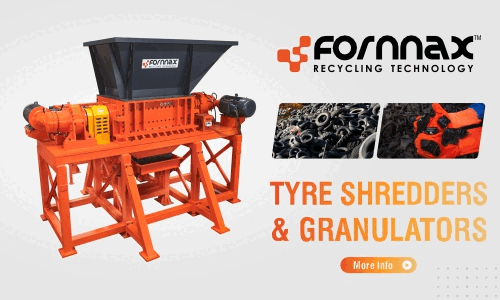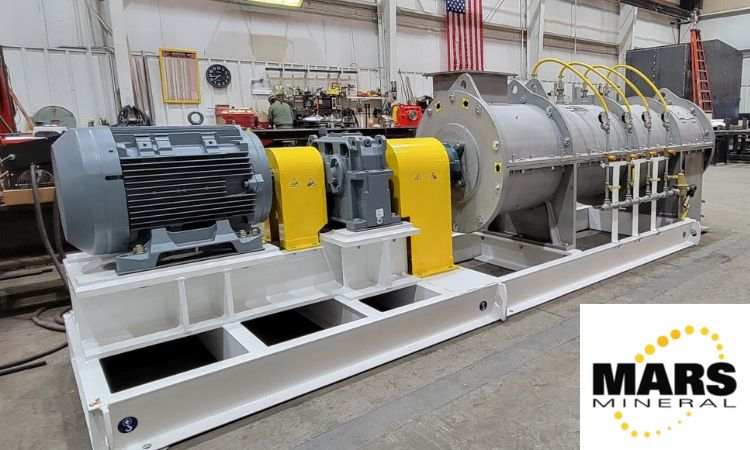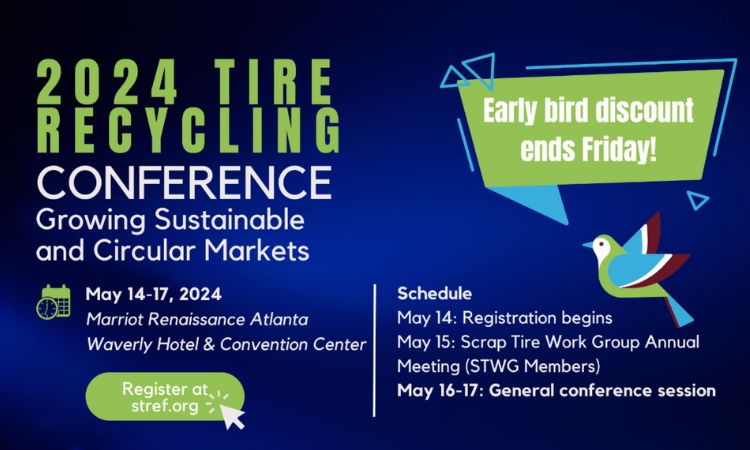Weibold Academy: applications of rubber mulch from recycled tires
Month by month, our Weibold Academy series touches different topics from the world of tire recycling and highlights different sides of running this business. If you have missed our previous articles, you can find links in the end of this post.
When we talk about products derived from tire recycling, we often imply crumb rubber or fine rubber powder. The former is the most common material, while the latter – one of the most expensive products of tire recycling. Yet there is another alternative, cheaper in value, but having promising market opportunities – tire-derived rubber mulch.
Rubber mulch from scrap tires is produced in the initial stages of recycling process when input material is shredded several times and separated from steel wires. This yields a thin product of homogenous size, approximately 50 mm long which can be vastly used in landscaping. Below, we describe several ways of how tire-derived rubber mulch can be used.
Landscaping
One of the biggest fields for tire-derived rubber mulch on the market is landscaping. Tire-derived mulch can easily replace conventional wooden mulch as it does not rot, it does not need to be displaced due to weather, it keeps weeds out and it is not conducive to dissemination of harmful insects.
Also, rubber mulch from tires may become a more economical solution for gardening compared to gravel or even to wooden mulch. It is certainly better than asphalt, and in many climatic conditions the preferred choice over grass lawns due to lower maintenance issues.
Sports fields
Living an active life and doing sports is fun, but doing sports on the right type of surface can preserve athletes from injuries. Merely playing games like soccer can lead to light injuries, bruises or scraped knees. Besides being more likely to result in injury, gravel does not provide as much traction for running, which means athletes are more likely to stumble and fall. And falling, they are likely to experience greater injuries on gravel than on rubber. At the same time, concrete and asphalt are hard, which means are not the best choice for performing athletics.
In turn, tire-derived rubber mulch can be used on both artificial and natural turf to create safe athletic environments. It works for golf courses, running tracks, soccer fields, and anywhere else where athletes do a lot of running.
In contrast to a wide-spread view, rubber mulch is a product that you do not have to try to make work; it is not a less-desirable replacement for something that works better, it is a good quality environment-friendly product.
Playgrounds
When it comes to playgrounds, wood mulch can be a right choice. It has numerous advantages over other conventional materials and it is certainly better than asphalt, and it’s preferable to grass lawn. Notwithstanding, injuries are prone to happen on playgrounds with wooden mulch and they prove worse than injuries on playgrounds with rubber mulch.
Playground’s rubber surfaces can be either loose mulch or solid material. The more solid versions, like the surfaces for running tracks, also make it harder for potential dangers like broken glass to hide under grass or wooden chips. Making dangerous materials clearly visible means they can be avoided and easily cleaned up instead of being discovered after the skin contact.
Natural grass under a playground is also a good choice, but it requires a lot of maintenance as it often trampled by kids running over it. In addition, the ground left is being packed down so tight that it becomes much harder than regular dirt. Where grass does survive, it requires resources, including water and regular maintenance like mowing. Rubber surfaces, in contrast, doesn’t require any maintenance.
Pebbles are yet another materials sometimes used for playground surfaces, but it is still a solid material and rubber is a much safer choice. Besides being more likely to result in injury, stones don’t provide as much traction for running, which means kids are more likely to stumble and fall. And falling, kids are likely to experience greater injuries on pebbles than on rubber mulch from recycled tires.
While so many tires are being discarded every year, it’s more than worth it to properly recycle them, especially when it can benefit kids and athletes safety. Recycled tire rubber should be taken in consideration by local authorities and public schools and more traditional playground surfaces should be replaced by surfaces made from recycled rubber.
To find out more about tire recycling and applications for recycled tire rubber, send us your inquiry to sales@weibold.com. We will be happy to help you build a flourishing tire recycling and pyrolysis business!
Weibold is an international consulting company specializing exclusively in end-of-life tire recycling and pyrolysis. Since 1999, we have helped companies grow and build profitable businesses.









